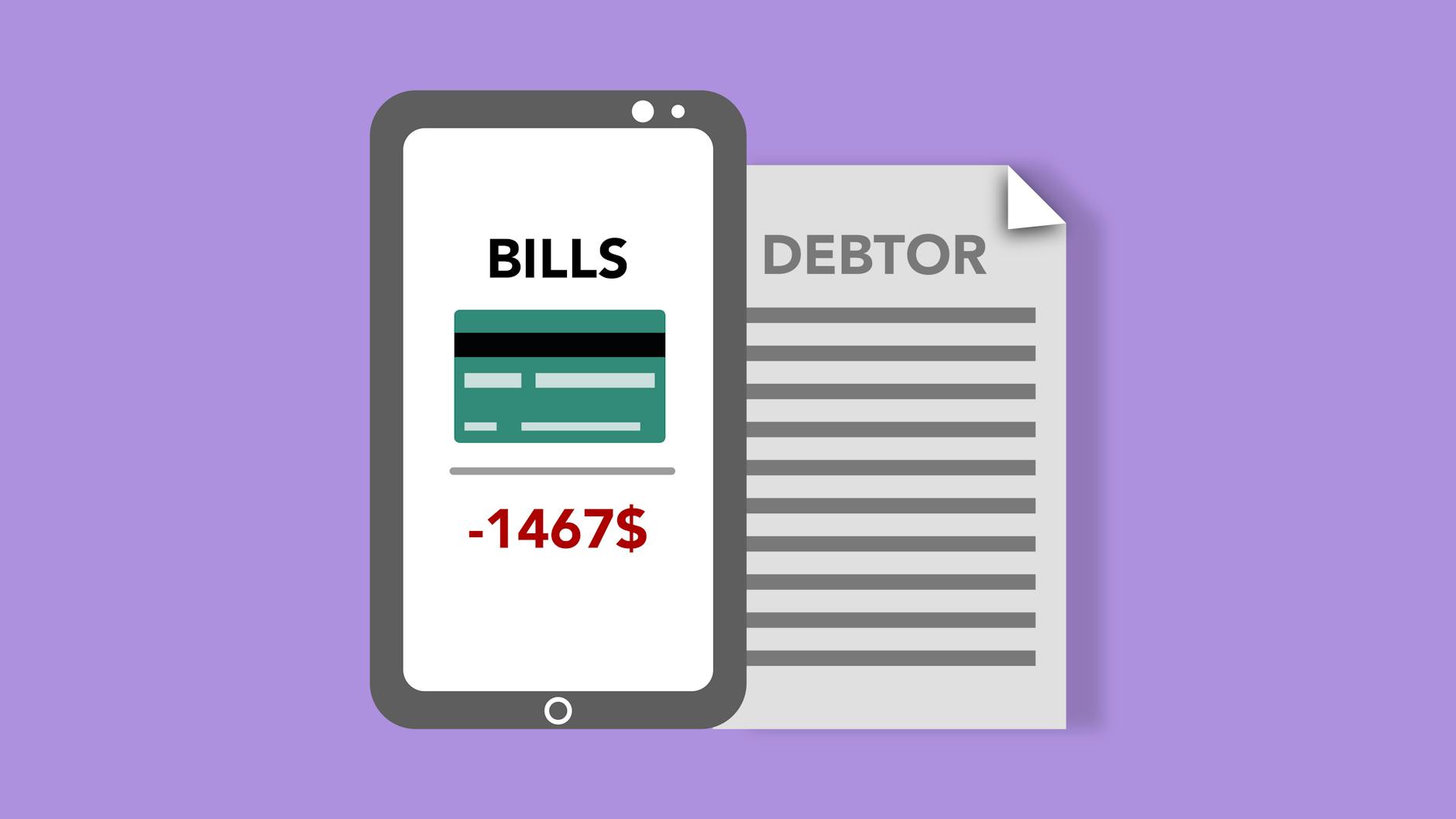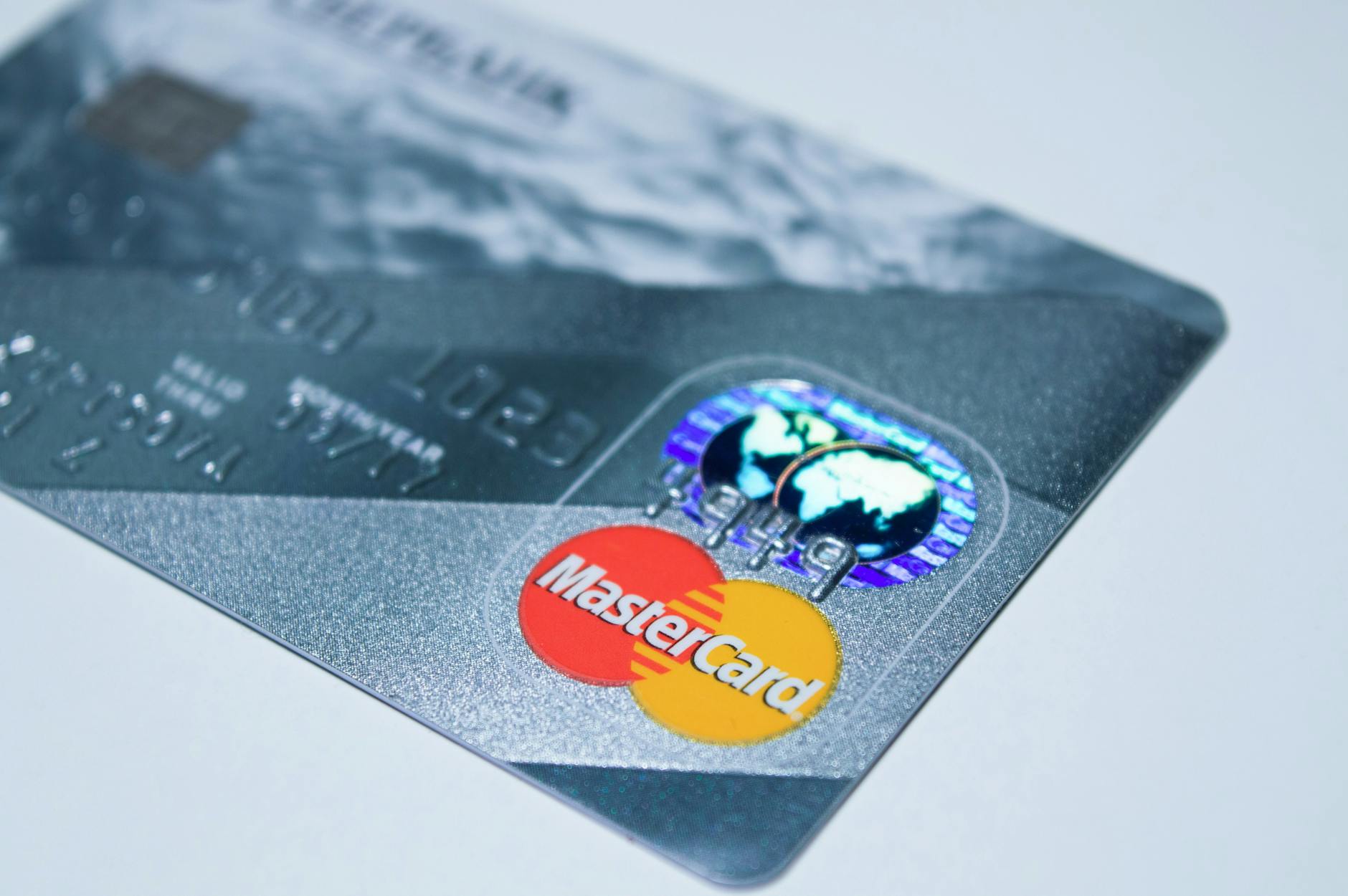Understanding Balance Transfer Offers on Credit Cards: A 2025 Guide to Saving on Interest and Paying Down Debt
Balance transfer offers on credit cards let you move high-interest debt to a card with a lower rate, making it easier to pay down what you owe. These offers can help you save money and get a handle on your monthly payments, especially if debt feels unmanageable.
Understanding balance transfer offers on credit cards is key if you want a smart way to tackle debt and avoid piling on more interest. Knowing how these deals work puts you in control and helps you choose the best path toward financial freedom.
Check out this helpful video if you want to learn more: Balance Transfer Credit Cards 101: A Secret To Financial Freedom | NerdWallet
What Is a Balance Transfer on a Credit Card?

Photo by Monstera Production
Understanding balance transfer offers on credit cards lets you make your money work smarter. A balance transfer is one of the main ways people tackle credit card debt, especially when high interest fees start to snowball each month. The basics are simple: you move what you owe from one credit card to a new card with a lower interest rate, often as low as 0% for a set period. This process can give you some breathing room, help you save on interest, and put you on a clearer path to being debt-free.
Defining a Balance Transfer
A balance transfer is when you move an owed balance from one credit card (or even a personal loan) onto another credit card—usually one with a special offer. Most balance transfer cards are designed to help you pay off existing debt under better terms. Instead of chipping away at a ballooning balance with high interest, you hit pause on accruing interest for a limited time.
For a clear rundown, see the guide on what is a balance transfer from NerdWallet.
How Does a Balance Transfer Work?
The process is straightforward but needs good timing. Here’s how it moves step by step:
- Apply for a balance transfer card: Pick one with a low or 0% introductory APR.
- Request the transfer: Tell the issuing bank which balances you want to move.
- Wait for processing: The new card company pays off your old balances, then moves that amount to your new card.
- Make timely payments: Start paying off the new balance. If done right, you pay little or no interest during the intro period.
After a successful transfer, focus on cutting down the debt as much as possible before the promotional window ends. For more details, Better Money Habits outlines how balance transfers work.
Key Terms to Know
Balance transfer offers use a few terms that often cause confusion. Here’s what you need to know:
- Introductory APR: This is the special low or 0% interest rate offered for a set time, usually 6 to 21 months.
- Transfer Fee: Many cards charge this fee (often 3–5% of the amount moved) upfront when you make the transfer.
- Promotional Period: This is the length of time the low rate applies. After that, the standard rate kicks in.
Understanding these terms helps you avoid surprises later on and plan your payments.
Why Do Consumers Use Balance Transfers?
People turn to balance transfers for a few solid reasons:
- Save on interest: By moving debt from a high-interest card, you pay less in fees overall.
- Pay off debt faster: More of your money goes toward your principal, not just interest.
- Simplify payments: Combine several debts onto one card for a single monthly payment.
- Short-term breathing room: A 0% rate gives you a break to catch up.
A balance transfer is a powerful tool, but only if used wisely. It offers a fresh start for managing your credit card debt and puts you back in control. For a closer look at best practices, see Equifax’s advice on using a balance transfer credit card.
How Balance Transfer Offers Work: Key Features and Mechanics
Understanding balance transfer offers on credit cards isn’t just about moving debt around. It’s about how the offer actually works, what you need to qualify, and the steps you need to follow to make every dollar count. Let’s break down the full process so you make smart moves with your money and avoid common slip-ups.

Photo by Ivan Samkov
Step-by-Step: From Selecting a Card to Moving Your Balance
To take advantage of a balance transfer offer, follow these main steps:
- Choose the right card: Not all cards are created equal. Look for a card with a 0% introductory APR, the lowest balance transfer fee you can find, and a long promotional period. You can find up-to-date comparisons of the best balance transfer credit cards for 2025.
- Apply for the card: Approval depends on your creditworthiness. Most issuers want to see good to excellent credit, often a score above 670.
- Initiate the transfer: After approval, request the transfer through your new card’s online portal or by phone. Provide details like account numbers and the amounts you wish to transfer.
- Wait for processing: The transfer can take anywhere from a few days to three weeks. Your new issuer pays your old lender, moving the debt to your new card.
- Begin your payments: Start paying down the transferred balance right away. Take full advantage of the promotional rate before it ends.
Limitations and Requirements: Know Before You Apply
Balance transfer offers are appealing but not for everyone. Several limits shape who qualifies and how much you can transfer:
- Credit score minimums: Card issuers usually require good or excellent credit.
- Transfer limits: Typically, you can transfer only up to your new card’s credit limit or a set portion of it.
- Fee structure: Most cards charge a transfer fee (usually 3–5% of the amount). Factor this into your payoff calculations.
- Ineligible transfers: You can’t transfer balances between cards from the same bank, and personal loans may not qualify.
Read more about how credit card balance transfers work to avoid common mistakes.
Timeline and What Happens After Approval
After approval:
- The bank processes your request—often in under two weeks.
- Your old card balance drops to zero or the requested lower amount.
- The transferred balance appears on your new card’s account statement.
You’re responsible for continued payments until the transfer finishes. Missing a payment could mean losing your 0% rate or racking up added fees.
Impact on Your Credit
Balance transfers can affect your credit score in a few ways:
- Credit utilization: If your new card has a high enough limit, moving your balance can lower your credit utilization ratio, which may help your score.
- Hard inquiry: Applying for a new card puts a small, temporary dip in your score.
- Account age: Opening a new account reduces your average account age, which can mildly impact your credit.
Find extra details about the link between credit utilization, score movement, and transfer effects on Credit Karma’s balance transfer guide.
Possible Risks and Pitfalls
Balance transfers can save money, but they’re not risk-free. If you don’t pay off the transferred balance before the intro rate expires, you’ll face regular APR charges, which can be higher than expected. Missing payments not only triggers expensive penalty rates but can also cause you to lose promotional terms.
Key things to watch out for:
- Overspending: Don’t rack up new purchases while paying off your transfer.
- Missed minimum payments: Keep up with payments or risk penalties.
- Ignoring the fine print: Know exactly when your promotional period ends and what your regular rate will be.
By understanding balance transfer offers on credit cards and their mechanics, you put yourself in a stronger position to cut debt and manage your finances wisely.
Comparing Balance Transfer Offers: What to Look For
When it comes to understanding balance transfer offers on credit cards, comparing card features is where you save—or lose—real money. Not every 0% APR offer is created equal, so knowing what to watch for can keep you out of a financial trap. Whether you’re carrying a few hundred dollars or several thousand, make these factors your checklist before you commit to any transfer offer.

Photo by Pixabay
Understanding Balance Transfer Fees and Costs: Break Down Common Balance Transfer Fee Structures, How They Impact Savings, and How to Calculate Total Cost Versus Interest Saved
Most balance transfer offers seem attractive at first—who wouldn’t want to save money on interest? But the less visible costs, like transfer fees and the terms after the intro period ends, play a big role in real savings.
Balance transfer fees are usually your first cost. Here’s what to know:
- Most cards charge a fee of 3%–5% of the amount transferred.
- This fee comes out of your pocket right away. For example, transferring $5,000 with a 3% fee costs you $150, before you’ve paid off a single dollar of debt.
To figure out if it’s worth it, break down the total costs:
- Calculate the total transfer fee (Transfer amount x Fee rate).
- Compare the fee to interest saved during the 0% intro period.
- Take into account what your new ongoing APR will be if you need more time to pay after the intro period.
Let’s look at a real-world scenario:
- You’re carrying a $6,000 balance at an 18% APR.
- You’re considering a 12-month 0% APR balance transfer card with a 3% fee.
- Fee: $6,000 x 0.03 = $180.
- Interest you’d pay in a year on the old card: $6,000 x 0.18 = $1,080.
- If you’ll pay the balance off in the intro period, the $180 fee is a fraction of what you’d have spent on interest.
But if the card’s regular APR is high, and you still have a balance when the promo ends, you need to factor that in.
When comparing balance transfer offers, zero in on:
- Introductory 0% APR length: Longer intro periods mean more time interest-free.
- Balance transfer fee: Lower is better.
- Ongoing APR: This is the rate you get after the intro window. Don’t ignore this, especially if your payoff plan takes longer.
- Annual fee: Some cards charge one, and that eats into your savings.
- Credit requirements: Some cards only approve borrowers with good to excellent credit.
- Transfer limits: Many banks cap what you can transfer to new cards. Check if it covers your full balance.
- Triple-zero cards: These rare cards offer $0 balance transfer fee, $0 annual fee, and 0% intro APR. While hard to find, they’re top value when available.
Best advice? Use tools that let you compare recent balance transfer credit card offers side by side. Sites like Credit Karma also let you see your approval odds and estimate savings, making it easier to match cards to your situation.
Tips for different borrower profiles:
- Low balances: For smaller debts, focus on zero or low fee offers.
- Large balances: A long intro APR period and a low transfer fee are key.
- Uncertain payoff timeline: Ongoing APR matters more if you might not clear the debt within the intro window.
- Average credit: Shop cards designed for fair credit, even if the intro period is a bit shorter.
Understanding balance transfer offers on credit cards is all about stacking up the numbers and looking past shiny 0% deals to find the option that truly saves you the most.
Using Balance Transfers Strategically to Maximize Savings
Done right, balance transfers aren’t just about moving debt—they’re about making your money stretch further. Using balance transfer offers on credit cards opens a window where you can pay off debt interest-free or at a much lower cost. The trick is knowing when these moves make sense, having a plan, and following best practices to avoid common missteps.
 Photo by Pixabay
Photo by Pixabay
When Is a Balance Transfer Most Effective?
The best time to use a balance transfer is when you have debt that's hard to pay off quickly because of high interest. Balance transfers work especially well for:
- Credit card debt that would otherwise take several months or more to pay off at standard rates.
- Debt sitting on cards with interest rates above 15%.
- Borrowers with solid credit seeking a break from mounting interest.
According to experts at NerdWallet, transfers are most useful when you can realistically pay off your balance within the 0% introductory window—this keeps your savings high and your risks low. If you only need a couple of months to clear your balance, the effort and fees aren’t always worth it. For deeper guidance, check out their answer to when a balance transfer is most effective.
Timing matters, too. Don’t wait until after another big purchase or close to the end of your intro offer period; make the transfer as soon as possible so your payment plan makes use of every month at the promo rate.
Strategies for Paying Off Debt During the Promotional Window
The promotional period is your chance to make big progress. Here are smart approaches to wipe out your debt before standard interest kicks in:
- Break down the total you need to pay off by the number of promo months—this gives you a target monthly payment.
- Set calendar reminders to make payments on time, every time.
- Automate payments so you never miss a due date.
- Consider using techniques like the debt avalanche (paying off highest-interest debts first) or debt snowball (tackling the smallest balances first), if you transfer multiple debts.
Try to pay more than the minimum each month—aiming for the full payoff if possible. Even rounding up an extra $50 or $100 can help shave off months of payments. Read more about these proven debt repayment strategies.
For an easy budgeting approach, try the 50/30/20 rule: dedicate 50% of your income to essentials (including debt payments), 30% to wants, and 20% to savings or additional payments. This method helps keep your payoff on track. See how this works in practice by reading these strategies for paying off debt.
Key Pitfalls to Avoid
Balance transfers sound simple but have some hidden traps:
- Making late payments: One slip can cancel your 0% promo rate, raising interest on your full balance.
- Racking up new purchases: Many cards put new transactions at a higher, regular APR—even while your transfer sits interest-free. Keep spending on your old card paused.
- Not knowing when the promo ends: Mark your calendar with the last day of your 0% window.
- Underpaying: Paying only the minimum during the intro period often leaves you with a hefty balance once the standard rate returns.
Missed opportunities add up fast. Set alerts and keep tabs on your account so nothing falls through the cracks.
Best Practices for Debt Repayment Success
A little effort goes a long way. To use balance transfer offers on credit cards most effectively:
- Build a payment plan that pays off your balance before your promo runs out.
- Track your goal every month—you’ll feel motivated as your balance drops.
- Automate or schedule payments so nothing is late.
- Avoid swiping your transferred card for new purchases until your balance is zero.
- Double-check your statements for errors and stay aware of your card’s terms.
Balance transfers reward organization and discipline—the more focused your approach, the more you save. For real stories and advice, American Express shares when a balance transfer is a good idea.
The bottom line: Understanding balance transfer offers on credit cards gives you a route to faster debt freedom. Put these tactics into play and see your savings grow each month you stick to your plan.
Top Balance Transfer Credit Card Offers in 2025
Understanding balance transfer offers on credit cards means keeping your finger on the pulse of the best deals each year. In 2025, banks are competing harder than ever, with standout features popping up that make paying off debt smarter and cheaper. Whether you're hunting for the longest 0% intro APR or want to avoid hefty transfer fees, the right card can make all the difference in your payoff plan.

Photo by RDNE Stock project
Current Leading Balance Transfer Credit Cards
The best cards this year bring longer promotional periods and, in some cases, fee reductions. Below are a few of 2025’s top-reviewed offers that regularly top expert lists:
- Citi® Diamond Preferred® Card
Highlights: Up to 21 months of 0% intro APR on balance transfers, one of the longest periods in the market. No annual fee. - Wells Fargo Reflect® Card
Highlights: Up to 21 months of 0% intro APR when you make minimum payments on time, with a modest balance transfer fee. Great for disciplined payers. - Chase Freedom Unlimited®
Highlights: Up to 15 months 0% intro APR on transfers, plus cash back rewards for new purchases. - Citi Double Cash® Card
Highlights: 18 months 0% intro APR, 2% cash back on every purchase (1% when you buy, 1% as you pay off).
You can see the full feature breakdowns and compare latest offers on the Best Balance Transfer Credit Cards of May 2025.
Noteworthy Trends for 2025
This year's cards are friendlier on your wallet and time. Here are some standout trends:
- Longer promo periods: Some banks now offer up to 21 months of 0% interest, giving you almost two years to make serious debt progress.
- Lower (or even $0) balance transfer fees: While fees still hover around 3–5%, a few cards offer promotions with no transfer fee for the first 60 days.
- Flexible eligibility: More issuers have reduced minimum credit score requirements or offer qualified applicants the chance to prequalify with only a soft credit check.
- Extra perks: Some cards include cash back or introductory offers, so you could pick up rewards as you pay down debt.
For card-by-card stats across these and other trends, check out the latest balance transfer card comparison tool from Bankrate.
How to Evaluate If One Is Right For You
Not sure which of these cards would be best? A few practical steps will help you choose:
- Match the promo period to your payoff plan.
Pick a card that gives you enough 0% months to pay off your full balance. - Weigh the transfer fee versus interest saved.
Calculate whether you’ll come out ahead after fees. If you’re moving a large sum, a slightly higher fee may be worth it if you gain more months at 0% APR. - Factor in ongoing APR and future needs.
If you’re not sure you’ll be debt-free by the end of the promo, check what your rate jumps to. - Review perks and requirements.
See if you qualify based on your credit, and make use of cash back or statement credits if they fit your everyday spending.
For extra guidance, sites like Credit Karma let you compare top balance transfer card offers and see personalized approval odds based on your credit.
Standout Features You Shouldn’t Overlook
When understanding balance transfer offers on credit cards, look for features beyond the headline APR:
- No penalty APR: Some cards don’t hike up the rate if you miss a payment (though you should always pay on time).
- $0 annual fee: Don’t pay just to hold the card—most of the top options don’t charge one.
- Rewards on new purchases: Handy if you need to put essentials on the same card, but avoid overspending.
If you’re working to simplify your debt and save money, the right card can help you do both at once. With careful selection, you can take advantage of longer 0% intro offers, lower fees, and perks that put a little extra money back in your pocket without extra risk.
Before you apply, read the fine print and budget your payments. A smart match now means more breathing room and fewer bills down the road.
Conclusion
Understanding balance transfer offers on credit cards can make a real difference when you want to pay down debt faster and spend less on interest. The main benefit is clear: moving your debt to a card with a low or 0% introductory rate lets more of your payment go toward what you owe, not the bank’s bottom line. This approach can save money and bring some much-needed breathing room.
But these offers come with trade-offs. There’s often a transfer fee, and if you miss payments or don’t clear your balance before the promo period ends, you could get hit with higher interest and extra charges. That’s why it’s smart to compare offers closely. Pay attention to the fees, how long the intro rate lasts, and what happens when regular rates return. Plan to pay off your debt in full during the intro period to get the most value.
Being disciplined and making on-time payments is essential. Using understanding balance transfer offers on credit cards gives you more control over your finances. Take what you’ve learned here to find the best deal for your situation—your future self will thank you. If you have tips or stories about using balance transfers, share them in the comments. Thanks for reading!


